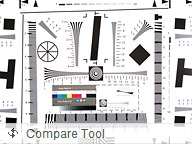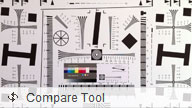Apple iPhone 4 review: Love it or hate it
Love it or hate it
Top-notch 5 megapixel camera
The Apple iPhone 4 has a 5 megapixel camera capable of taking photos at up to 2592 x 1936 pixels. There is a LED flash too, which may even make some difference given the back-illuminated camera sensor.
The camera has both autofocus and touch AF, which are fast and quite accurate. The latter even tracks moving subjects.
The camera user interface is neat and simple – the only controls are a shutter/rec key, flash settings and a small thumbnail in the corner that shows the last photo taken. Oh, and there is a switch to toggle between the main and the front-facing camera.




The camera UI is still very simple
The image quality is the best the iPhones have pulled off. Color rendering is quite nice though oversaturated and in broad daylight there’s plenty of resolved detail. So overall you get sharp and vibrant images.
The grainy effect of the high noise levels we saw back the 3GS photos is still visible on the iPhone 4 samples too but only when you preview the shots at 100% magnifications.There’s no sign of chroma noise, it just seems that Apple R&D prefers that untouched grainy look that is more sparing on the fine detail. Otherwise they could have wiped it clean with some noise suppression.
We never though we'd say that for, but resolution-wise, the iPhone 4 camera is among the best performing 5 megapixel cameraphones out there.
We also noticed the field-of-view is bit narrower than we would have liked. We estimated it at being somewhere around 38mm in regular 35mm equivalent. Now that’s a lot, especially when there are already phones with 28mm wide angle lenses.
Back illuminated sensors such as the one on the iPhone 4 usually deal better with noise in darker scenes so we were curious to see the high ISO performance. For this test we used Samsung Galaxy S for comparison.


Apple iPhone 4 vs Samsung Galaxy S low-light camera test: 100% crops
As you can see, the iPhone 4 samples get quite noisy and the slightly oversaturated colors suffer the most. Again, the reason for that is Apple’s laid-back approach in noise suppression.
Samsung R&D has applied a more conventional technique – the higher the ISO, the higher the noise-suppression. As a consequence, the Samsung Galaxy S looks a lot smoother at ISO400 but it lacks some of the fine detail.
At this point we can’t really see a tangible advantage of the back-illuminated sensor of the iPhone 4, but we also can’t call the Galaxy S photos that good. Both processing techniques make compromises, it’s just that you’d have to pick which compromise bothers you less.
Photo quality comparison
We’ve also added the Apple iPhone 4 to the database of our Photo Compare Tool. You can see how the Apple iPhone 4 image quality compares to that of some of the other handsets we have reviewed. Clicking any of the following three images will take you to our dedicated page for some pixel-peeping pleasure.



Apple iPhone 4 in the Photo Compare Tool
Video recorder in HD
The iPhone 4 records video in 720p resolution at 30 fps. That’s quite something as an upgrade to the 3GS. Clips are stored in .MOV format. The big letdown is the lack of a video resolution setting. We’re not even gonna mention SloMo or Time Lapse videos. We’re talking about giving the user the simple choice between HD and VGA.
Anyway, the actual video quality is quite good though. The framerate is very consistent. Perhaps the iPhone 4 could use some sort of digital image stabilization to keep handshake under control, but we suppose it’s too much to ask.
Video clips are only accessible from the gallery. They can be sent over email, MMS or directly uploaded on YouTube. Here is an untouched 720p video sample for you to check out.
Here are two 720p video samples uploaded to YouTube:
The recorded clips can also be trimmed straight on the phone. It’s as basic as it gets: a thumbable filmstrip for you to set the start and end of the trim. You can quickly preview the part of the clip you’re about to trim. But the best thing is you can overwrite your current clip or save it as a new one (the iPhone OS 3 didn’t give you a choice).


Trimming a video clip and saving the result
You can edit movies with iMovie too, but it’s a paid app exclusively available for the iPhone 4.
Video quality comparison
The Apple iPhone 4 was also included in our Video Compare Tool database. Check it out – the tool’s page includes a quick walkthrough on how to use it and what to look for.
Reader comments
- IPhone world
- 08 Sep 2024
- rMA
I just bought 2 for 20 bucks they are amazing
- 2 .khattak
- 13 Jun 2024
- UUK
i love iphone 4



















